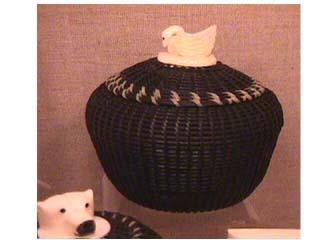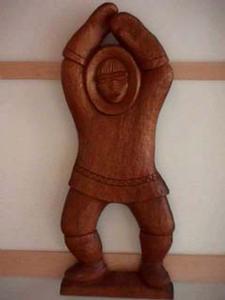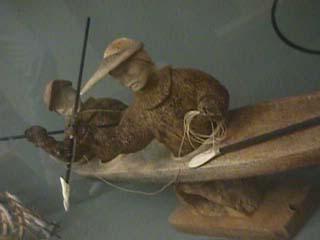16 July, 1999
Aloha, This is my last day in Fairbanks and I spent the morning at the
Alaska Bird Observatory. They are a nonprofit organization located in the
wetland area of what used to be a dairy farm. Many migratory birds feed in
the area and they are caught using nets that are set between trees in the
densly wooded areas; the birds are then banded or cataloged, weighed, and
have their body fat level assessed. (Body fat correlates with whether the
bird has been stressed or not.) The birds,usually faithful, will return to
the same area to nest year after year. The data is housed on a
computerized data base for researchers to utilize. The institution also
educates the public with tours and informal lectures. While I was there a
summer camp group of children was being given a hands on experience in
adaptions with body parts being passed around. The children were very
curious and appreciative. Alaskans seem protective and proud of their
natural environment. Andrea Swingley, one of the educators, told me that
more bird seed is sold in Alaska, than any other state to feed the birds
that over winter.
I returned to my B&B to pack up for the first leg of my journey back and
then to the airport. In the air the mountains were clouded over and so I
did not get a good camera shot. Luckily I will have a short layover in
Anchorage in which to visit some interesting native people's exhibits and
get a close up view of a glacier.
Anchorage is similar to Seattle in being close to the ocean and having lots
of low clouds and misty rain. It is larger that Fairbanks, but still has a
feeling of a last frontier and a rough edge. I visited a new Alaska Native
Medical Center that housed a number of Alaskan native art work: beautiful
baskets, masks, clothing, carvings, and dolls. The pictures at the bottom
of this page are some examples from their exhibit.

Basketry

Sculpture of an Inuit. Notice his sunglasses.

Most sources I have read say the Greenland Inuit invented the kayak. One source said that a migration of Canadian Inuits brought the kayak back to Greenland where the knowledge had been lost.
Contact the TEA in the field at
.
If you cannot connect through your browser, copy the
TEA's e-mail address in the "To:" line of
your favorite e-mail package.
|
